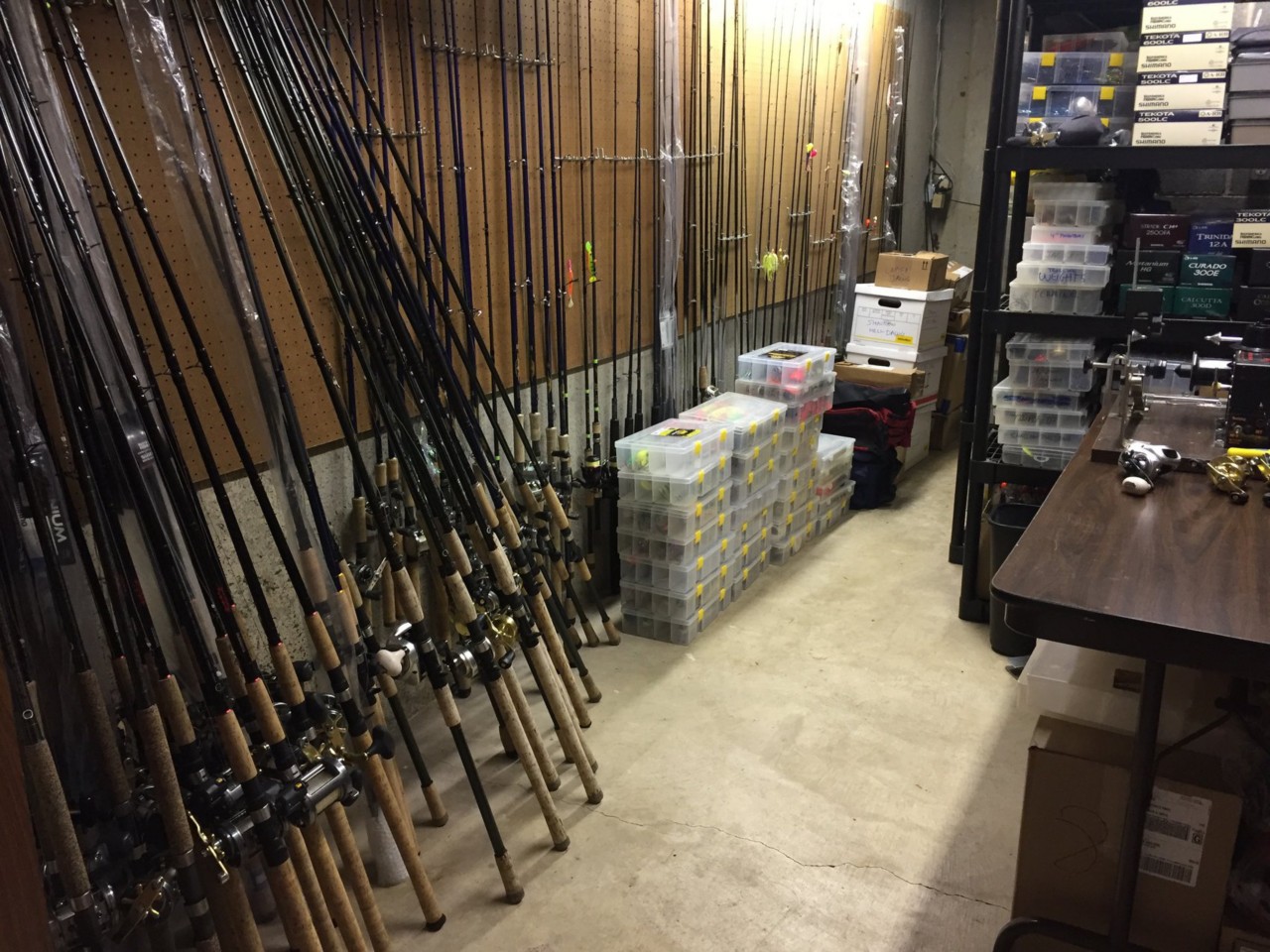The Full Monty Unload
Start by removing every item from your box(es), doing a rough sort as you go – group the sinkers, swivels, crankbaits, jig heads, etc. A large folding table in the middle of your garage is perfect for this, but a workbench or even the kitchen table will work fine. While you’re unloading, go ahead and trash everything that’s damaged or worn beyond repair, but make a list of the tackle, soft plastics, or lures you might need to replace.
Once empty, shake the box itself over a large trash can to get rid of all loose dirt, scales and other debris, then hit the sink. Wash the box with warm water and a healthy dose of dish soap, using a scrub brush to break loose the tough stuff and an old toothbrush to get into the corners and crevices. Once you’ve rinsed, dab away the bulk of the moisture, then set it aside until every bit of the tacklebox is bone dry.
If you store your tackle in smaller boxes and see signs of rusty hooks, debris, or if the box is damaged, consider transferring the tackle to a different box. Replacing smaller storage boxes is a cost-effective solution to keep your tackle in good condition.
Take Inventory
Once you’ve got everything sorted by type, color, weight, etc., it’s time to start freeing yourself of the things that don’t help you catch more fish.
Chances are you’ve got a ton of lures and you’ve spent a good bit of money on them. But now it’s time to ask yourself a couple of hard questions about each one: a) did it catch any fish for me last year?; b) is there a reasonable chance I’m going to use this bait this year?; and c) would I buy this lure again knowing what I know now? If the answer to any of these questions is no, this item should not go back into your tacklebox. Period. Put it on a shelf with your spare tackle if you must, or just throw it in the garbage can. But either way, don’t let a bad spend convince you to haul around something you just don’t need.
Once you’ve gotten rid of the unusable tackle you can start identifying gaps in your arsenal and figure out what you need to fill in the gaps. Consider listing every bait individually on paper or in a spreadsheet, keeping your groupings intact. The combination of seeing all your spinnerbaits (or whatever) laid out together and cataloged on paper will help you see what’s missing. This is also a good time to note the more expendable items – weights, line, swivels, soft plastics, etc. – that you need to replenish as well. This will really save money when attending sport shows, shopping at your favorite tackle shop or browsing online. You’ll know exactly what you need, but like most of us, you’ll still need another “hot” color that might save the day!
Time for a Tune-up
Inspect single bait for signs of wear. Re-bend the hook you stepped on last year, and make sure all your points and barbs are sharp and rust-free. Replace hooks as needed – this is your sole connection to any fish you’ve convinced to take your bait, so this is one place you really shouldn’t skimp. A good way to check if a hook is sharp enough is to CAREFULLY run the point across your fingernail. If it catches, it’s sharp. If it slides across with nary a snag, it’s suspect and should be changed. Also check your hard plastics for cracks and loose pieces – a little superglue or epoxy can fix most such flaws, but if the integrity is in doubt, toss it and add it to your shopping list.
Do you own a few old standby lures that you always come back to? Pay special attention to them, and maybe replace the hooks just to be on the safe side. Quality lures can last and catch fish for decades with proper care.
Load ‘Em Up
When it’s time to start reloading your box resist the urge to rush. In fact, take your time and try not to do it all at once; a few hours or a day away can give your subconscious time to conceive of a better way to organize and group things. Don’t be afraid to load and unload several times until you’re perfectly happy with the way everything flows, and don’t forget to leave some space in each group for future acquisitions. Label as needed or preferred so you can find things quickly and easily. Masking tape and a Sharpie are great for this if you haven’t finalized locations just yet.
Mercury Pro Jim Saric from The Musky Hunter TV show organizes his tackle in storage boxes based on season and water color.
“I am constantly fishing different waters during the season, so I load my boat with lure types most applicable for that trip,” said Saric. “During spring my lure selection is dominated by smaller lures compared to mid-summer or fall.
“Also, if the water is clear, my lure color selection is much different than if I am fishing stained water. So I organize my lures based upon clear, stained or dirty water. It doesn’t matter what fish species you chase, organizing based upon season and water color makes it easy to grab the key lures you’ll need and be efficient in lure storage.”
And that’s it – you’re ready to hit the water with confidence and efficiency, and you gave yourself something constructive to do while waiting for the opportunity to fish. A clean, well-organized tacklebox won’t guarantee you any fish, but it does give you one less hassle to deal with when you’re out on the water.




